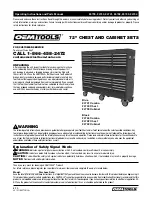
Chapter 11. Performance considerations
233
11.4.5 Determining the number of paths to a LUN
When configuring the IBM DS6000 for an open systems host, a decision must be made
regarding the number of paths to a particular LUN, because the multipath software allows
(and manages) multiple paths to a LUN. There are two opposing factors to consider when
deciding on the number of paths to a LUN:
Increasing the number of paths increases availability of the data, protecting against
outages.
Increasing the number of paths increases the amount of CPU used because the multipath
software must choose among all available paths each time an I/O is issued.
A good compromise is between 2 and 4 paths per LUN.
Subsystem Device Driver (SDD): Dynamic I/O load balancing
The Subsystem Device Driver is a pseudo device driver designed to support the multipath
configuration environments in the IBM TotalStorage DS6000. It resides in a host system with
the native disk device driver as described in
Chapter 14, “Open systems support and
software” on page 275
.
The dynamic I/O load-balancing option (default) of SDD is recommended to ensure better
performance because:
SDD automatically adjusts data routing for optimum performance. Multipath load
balancing of data flow prevents a single path from becoming overloaded, causing
input/output congestion that occurs when many I/O operations are directed to common
devices along the same input/output path.
The path to use for an I/O operation is chosen by estimating the load on each adapter to
which each path is attached. The load is a function of the number of I/O operations
currently in process. If multiple paths have the same load, a path is chosen at random
from those paths.
11.4.6 Determining where to attach the host
When determining where to attach multiple paths from a single host system to I/O ports on
the DS6000, the following considerations apply:
Enure that the host has at least two connections to the DS6000, using one host I/O port
on DS6000 controller 0 and one host I/O port on controller 1.
If you need more than two paths from a host to the DS6000, spread the attached I/O ports
evenly between the two DS6000 controllers.
The DS6000 host adapters, device adapters and ranks all have affinity to one DS6000
controller card or the other.
11.5 Performance and sizing considerations for z/OS
Here we discuss some z/OS-specific topics regarding the performance potential of the
DS6000. We also address what to consider when you configure and size a DS6000 to replace
older storage hardware in z/OS environments.
Summary of Contents for System storage DS6000 Series
Page 2: ......
Page 5: ...iii...
Page 6: ...iv DS6000 Series Concepts and Architecture...
Page 18: ...xvi DS6000 Series Concepts and Architecture...
Page 24: ...xxii DS6000 Series Concepts and Architecture...
Page 26: ...2 DS6000 Series Concepts and Architecture...
Page 44: ...20 DS6000 Series Concepts and Architecture...
Page 46: ...22 DS6000 Series Concepts and Architecture...
Page 68: ...44 DS6000 Series Concepts and Architecture...
Page 88: ...64 DS6000 Series Concepts and Architecture...
Page 136: ...112 DS6000 Series Concepts and Architecture...
Page 138: ...114 DS6000 Series Concepts and Architecture...
Page 218: ...194 DS6000 Series Concepts and Architecture...
Page 242: ...218 DS6000 Series Concepts and Architecture...
Page 266: ...242 DS6000 Series Concepts and Architecture...
Page 298: ...274 DS6000 Series Concepts and Architecture...
Page 352: ...328 DS6000 Series Concepts and Architecture...
Page 392: ...368 DS6000 Series Concepts and Architecture...
Page 396: ...372 DS6000 Series Concepts and Architecture...
Page 404: ...DS6000 Series Concepts and Architecture DS6000 Series Concepts and Architecture...
Page 405: ......
















































